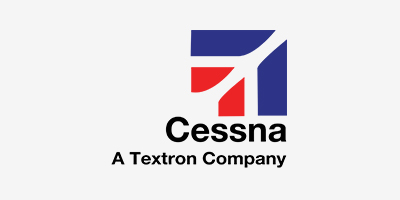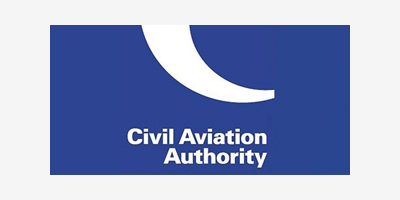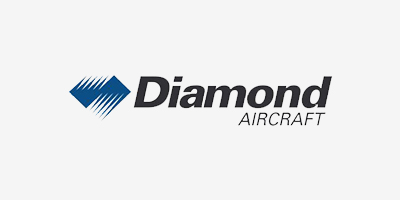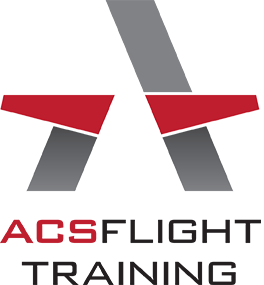BECOME A PILOT
How to Become a Commercial Airline Pilot
We have created a mini-guide to help you identify the best route to become a Commercial Pilot; We have included some key points to consider to help you make the best choice about your flight school.
1. DO YOUR RESEARCH
To qualify as a first officer for an airline, you will need to complete your training with a reputable flight school, like ACS Flight Training. How do you find the right pilot training school for you? We would advise the following:
- Finalise your budget
- Identify the most practical pilot course for you
- Research what, if any, exemptions you qualify for
- Speak to students at training schools and read any testimonials or reviews on social media
- Seek advice from commercial pilots, airlines (recruitment pages), forums and career pages
- Create a shortlist of flight schools by cost, proximity and training location
- Look into open days - visit some flight schools and be sure to ask the right questions
2. CHOOSE A LOCATION
- Think carefully about where you’ll learn to fly. The UK’s congested airspace and variable weather conditions mean that those trained here go on to be confident, highly trained pilots. Which is one of the main reasons why Pilots trained in the United Kingdom have a good reputation throughout the world. Warmer climates offer more predictable weather conditions for flight training, which can be useful; however, you would also have to factor travel and accommodation costs if travelling overseas for training.
3. CONSIDER YOUR CAREER DEVELOPMENT
- Excellent flight instructors train students to become the best pilot possible. Airline recruiters will look at your performance in training, not merely your CPL licence and interview skills. ACS can offer guidance and support to graduate pilots, giving them the skills and confidence to realise their potential. We can also recommend airline assessment and job preparation companies who can assist you with this. These companies will also help with CV development and interview workshops. Read the testimonials of former students of ACS Flight Training on our website or follow us on social media for reviews and school updates.
4. FIND A SCHOOL WITH GREAT FACILITIES
It’s essential to look for a modern fleet of training aircraft and an excellent safety record. It’s ideal for students to train on similar systems to those found in modern commercial airliners. Flight simulators are also invaluable for training; they enable the instructors to replicate extreme weather conditions and emergencies. They also provide the opportunity to run through lessons learnt in the aircraft and focus training on specific areas – all at the touch of a button.
- ACS Flight Training utilizes Cessna, Piper and Diamond aircraft which are equipped with the systems found in modern commercial airliners.
5. LOOK AT JOB PROSPECTS AFTER QUALIFYING AS A PILOT
6. CONSIDER SAFETY AND EFFICIENCY
7. THE MODULAR TRAINING ROUTE TO THE FLIGHT DECK
Whilst the ACS Flight Training Fast Track ATPL course offers the best value for money, this might not be the solution for you. The important thing is to choose a path you can afford. Good schools work hard to make their courses accessible to people with different budgets and time commitments. At ACS Flight Training, we offer Fast Track course fees paid by monthly instalment.
What are the differences between modular and integrated training?
- Integrated training is a training method to complete all your flight training in one go. This training takes student pilots with zero flying experience through to ‘frozen ATPL’ (the air transport licence required to act as a first officer with an airline), in 18 months. Schools offering this training will often set entry requirements and require full payment in advance, and the training costs are usually more than £120,000.
- Modular flight training allows students to obtain the flying licences, and theory examinations required, at the students own pace and with various training organisations, if needed. The full modular training course at ACS can take as little as 14-18 months. The advantages of Modular training can mean training costs can be spread and conducted at a pace suited to the student, and allow for the opportunity to work between modules plus offers the freedom to fly wherever the student pilot chooses. In contrast, the integrated students have restrictions placed on flying routes for students who already have the PPL and ATPL theory credit. ACS Flight Training is also the only school in Scotland to offer competitively priced CPL, MEP and MEIR training courses in our latest generation Diamond DA42 and Alsim AL42 Flight Simulator; this courses can be completed in 3 months.
8. FORECASTS FOR THE AVIATION INDUSTRY
There is a demand for pilots now, but what does the future hold for your career? Aviation experts spend a great deal of time analysing the future for the industry. Recent research points to positive growth for the industry – here are some headliners:
Airbus’ Global Market Forecast for the next 20 years echoes that of Boeing’s market outlook for 2022-2035. They estimate that more than 2 million new aviation personnel will be required worldwide - including 617,000 new commercial airline pilots. IATA predicts a rise in passenger figure of 3.91 billion by 2022 – that’s a 31% growth from 2012. ‘Growth’ is a sentiment echoed by the UK government who expect the UK to see a 1-3% increase in demand for air travel per year, up to 2050.
ACS analysed data published by the European Aviation Safety Agency (EASA). Their results found that, based on the current rate of issue, Europe will encounter a shortfall of 750 pilots per year, up to 2034.
- So, if you’ve always wanted to be a commercial pilot, it’s time to plan your dream career. Do however think carefully about the pilot school you choose, visit the site, meet the training and operations team, look through what the fees cover and make sure that the school is the right one for you.
9. YOUR PROSPECTS
In the ONS Annual Survey of Hours and Earnings 2018, ‘aircraft pilots’ were listed 4th in the top 10 of the ‘highest paid jobs in the UK’ with an average pay before tax of £88,874. The average starting salary for a first officer is £32,000-45,000 pa – higher than that predicted for university graduates. The combination of quick completion, excellent prospects, and starting salary suggest that there has never had there been a better time to train to become a pilot.
Choosing where and how you study requires careful consideration. Your employability upon completion of your ATPL will be down to you and your ability as a pilot. ACS Managing Director, Graeme Frater, offers advice on choosing between courses: “Our Fast Track course is by far the most cost-effective route to becoming a pilot. The course enables you to focus on only your training, and ensure you have consistency in your flight phases.”
- Graeme Frater explains how best to approach modular training: “Work out what you need to save to carry out each phase of your training and try to save sufficient costs to complete as many phases in one go. It may well be practical for example, to complete your PPL, hour building and ATPL ground school initially, and then save sufficient funds to complete your training at a later date.”
10. CONSIDER THE COSTS
Consider the direct benefit of being careful with your money. The cost of training can be as high as £120,000, and ACS think that’s too much. We firmly believe that it’s not about getting the most significant loan or making that debt any more substantial than it needs to be, spending £120,000 or more to succeed. With the Fast Track ATPL course, we take students from little or no experience to a ‘Frozen ATPL’ within 18 months.
The significant cost saving is enabled by planning our courses and resources effectively. Our company also operate Perth Airport, so this means our students save thousands on landing fees. ACS Students complete flight phases 1 and 2 of their training in a Cessna 152 or Piper PA28 aircraft. Flight phases 1-2 take approximately three months on a full-time basis, after which the students will complete phase 3-4 (Hour Building and ATPL Theory) at Perth Airport and Pathway, Rosyth near Edinburgh. Once the ATPL Ground school is complete, and the student has successfully passed the exams the student then returns to Perth Airport to complete the CPL, MEP and MEIR courses in our fleet of Diamond DA42 aircraft. The competitive course fee is a result of operational savings being passed directly to our students.
More information on ACS Fast Track course can be found here - ACS Fast Track
ACS also work closely with Lendwise who are a specialist loan provider dedicated to education finance, allowing you to pursue your pilot training aspirations.
Key features of a Lendwise loan are as follows:
- No co-signer or guarantor required
- Up to 80% of your course fees covered
- Competitive interest rate that is fixed for the entire duration of your loan
- Loan terms up to 10 years
- Interest rate is personalised to your profile
- No fees or penalties for early repayment of your loan
Contact Lendwise* to apply directly. UK residents only.
WHERE IS PERTH AIRPORT?
HOW TO BOOK A TRIAL FLYING LESSON?
Before committing any significant time and money to flying, a sensible option when you are researching schools is to take a trial lesson to make sure flying really is for you. You will be able to take the controls of the aircraft if you want to, putting it through manoeuvres, all under the safe supervision of the instructor. The 60-minute flight is the ideal duration as an introduction to flying.






